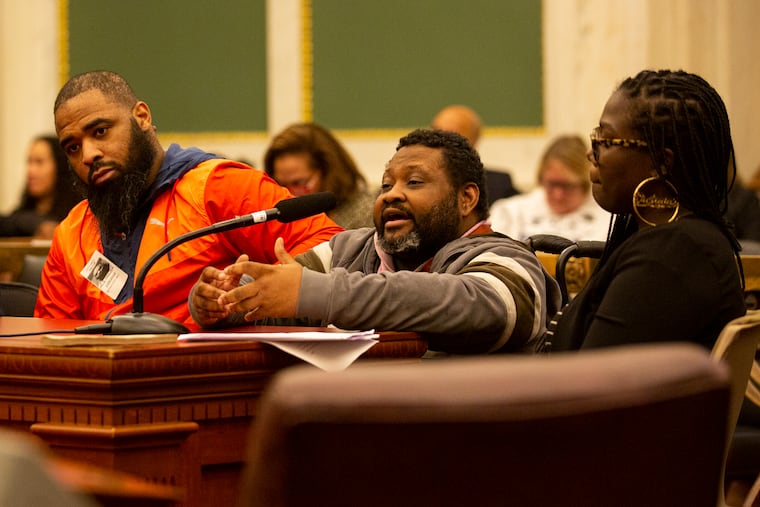Philadelphia has a crisis of homicides, but also of neglecting gun violence survivors | Opinion
While it is crucial to explore why homicides are rising, the focus on murders conceals the reality that roughly 70%-80% of shooting victims survive their attack.

Gun violence has spiked dramatically in Philadelphia, and 2021 is on pace to be the city’s most violent year in history. In recent months, a flurry of articles has been written on this dramatic uptick, focusing largely on the reasons behind the rise in homicides during the COVID-19 pandemic.
But while it is crucial to explore why homicides are rising, the focus on murders conceals the reality that roughly 70%-80% of shooting victims survive their attack. Advances in emergency treatment and medical technology have helped save countless lives that would otherwise be lost to gun violence in recent decades. Yet, with their lives forever altered, the harmful fallout of the recent gun violence surge will not end for these survivors or their communities by bringing down the homicide rate alone.
Shootings disproportionately affect young Black men living in communities suffering from poverty, unemployment, and a fundamental lack of investment. This year, there have been 277 (20%) fatal shootings compared with 1,079 (80%) nonfatal shootings in Philadelphia. Eighty-five percent of all shooting victims are Black. Much of this violence has been located in a handful of neighborhoods, including Huntington Park-Fairhill, Kensington, Germantown, and Strawberry Mansion.
Relentless shootings in certain neighborhoods mean that surges in violence effectively produce isolated communities of survivors, comprised of direct shooting victims and the countless others indirectly exposed to everyday violence, like those who witness a shooting or lose a loved one. These survivors suffer from poorer mental and physical health, chronic pain, and struggles with everyday activities like eating, sleeping, and working.
But it goes beyond the individual, too. Entire neighborhoods with high rates of gun violence experience higher rates of post-traumatic stress disorder (PTSD), lower cognitive ability among children, and increased heart disease. In Philadelphia, specifically, neighborhoods with more nonfatal shootings have higher rates of harmful health behaviors related to smoking, physical inactivity, and obesity. High shooting rates are also linked to functional disability, such as difficulty walking or problems bathing or dressing, in local communities, particularly among young men.
» READ MORE: Gun violence survivors are begging for resources. Would this bill help them?
Gun violence is not only robbing young people of their lives, but it is also devastating entire communities.
It is imperative to halt the surge in violence not only to save lives now but also to prevent extensive, long-term community harm. Yet, state leaders have refused to enact new legislation or use billions of dollars in reserves from excess revenue and federal stimulus dollars to reduce gun violence.
At the city level, critical violence prevention programs and social services must be reinstated, informed by pandemic-era guidance. And police must address gun violence using an evidence-based approach that focuses on the small group of people involved in shootings without doing more harm to local communities.
Beyond prevention, city officials must also provide resources to shooting survivors and the neighborhoods most devastated by gun violence. Although long-term efforts to dismantle the complex root causes of violence like poverty and structural racism are needed, now is the time to directly address shootings.
» READ MORE: Should Philadelphia declare a gun violence emergency? | Pro/Con
Survivors are at high risk for reinjury and the retaliation that perpetuates cycles of violence. Investment is critical for hospital-based programs that deploy assistance for survivors following injury, such as Healing Hurt People and the CHOP Violence Intervention Program, as well as services like Fighting Chance that teach lifesaving skills for shooting bystanders.
Ongoing health-care assistance, financial aid, behavioral therapy, and victim services are critical long after the last shots have rung out.
High-shooting neighborhoods in Philadelphia are in danger right now, but there will be ongoing consequences without sustained effort, even if violence can be reduced in the short term. Decades of disinvestment and an unprecedented global pandemic have contributed to surging shootings, but a willful ignorance to this devastation will ensure that the communities hurting the most will continue to suffer for years to come.
Daniel Semenza is an assistant professor at Rutgers University, Camden. He studies the causes and consequences of gun violence, violent victimization, and health disparities related to the criminal justice system. He is a member of the Scholar Strategy Network.